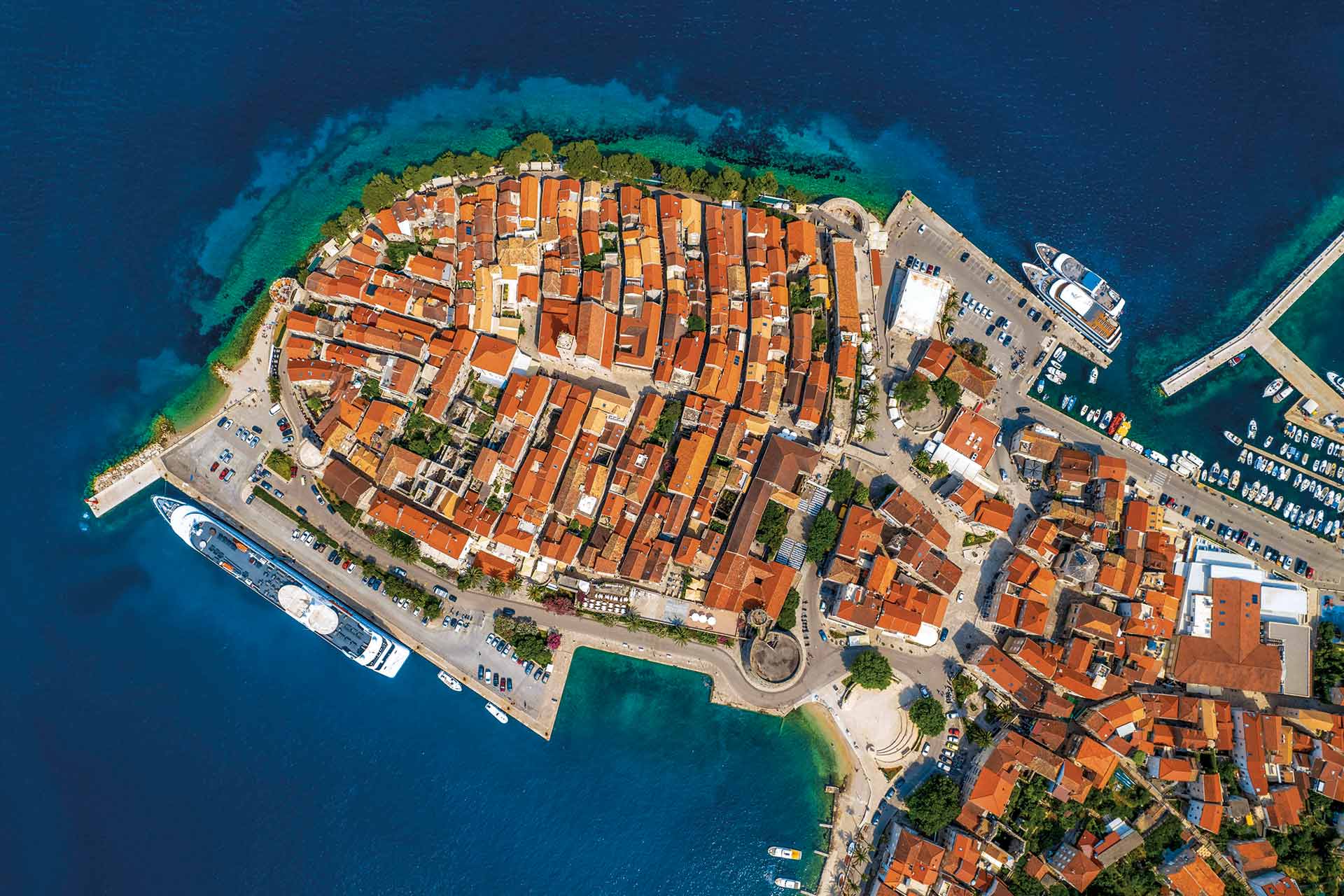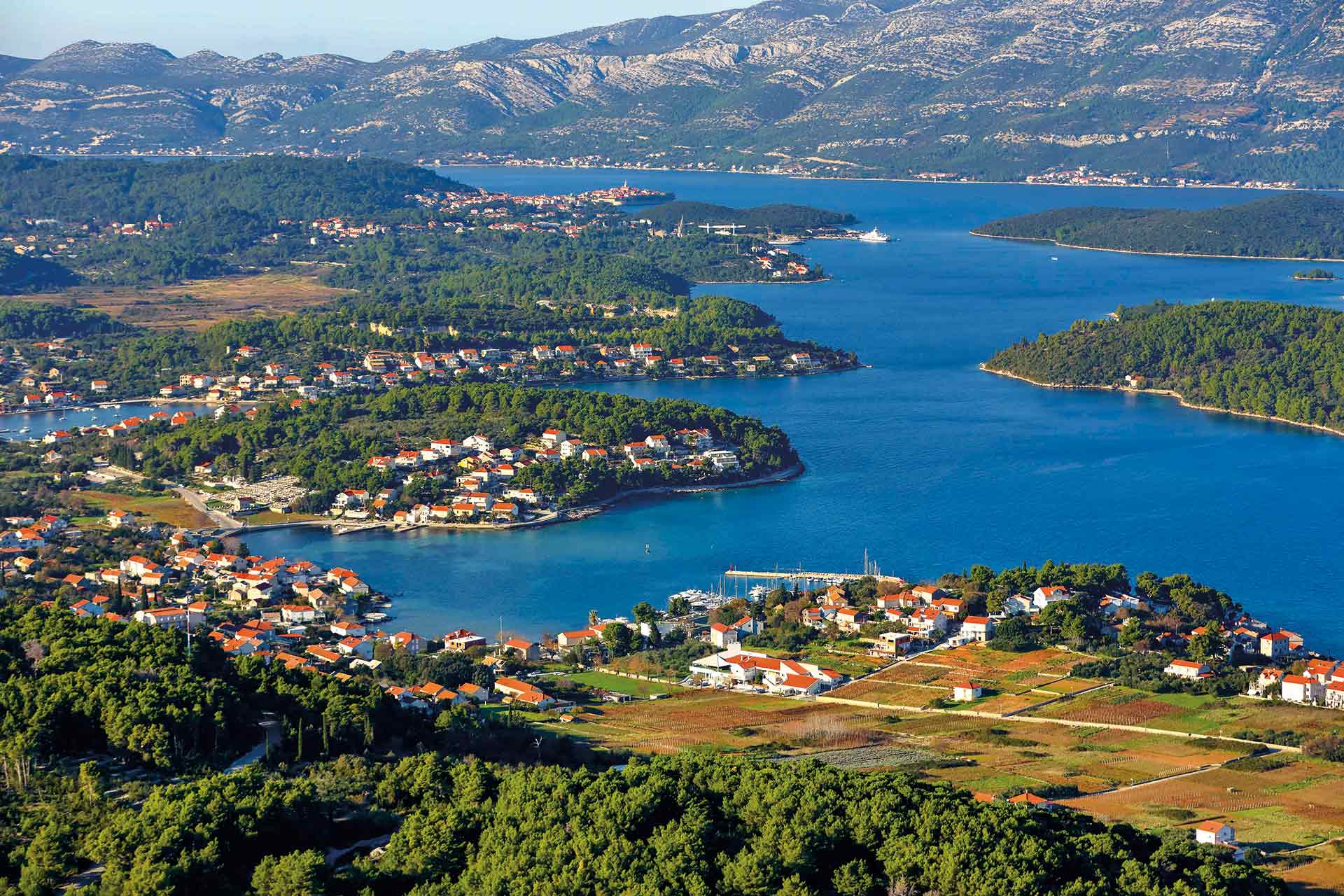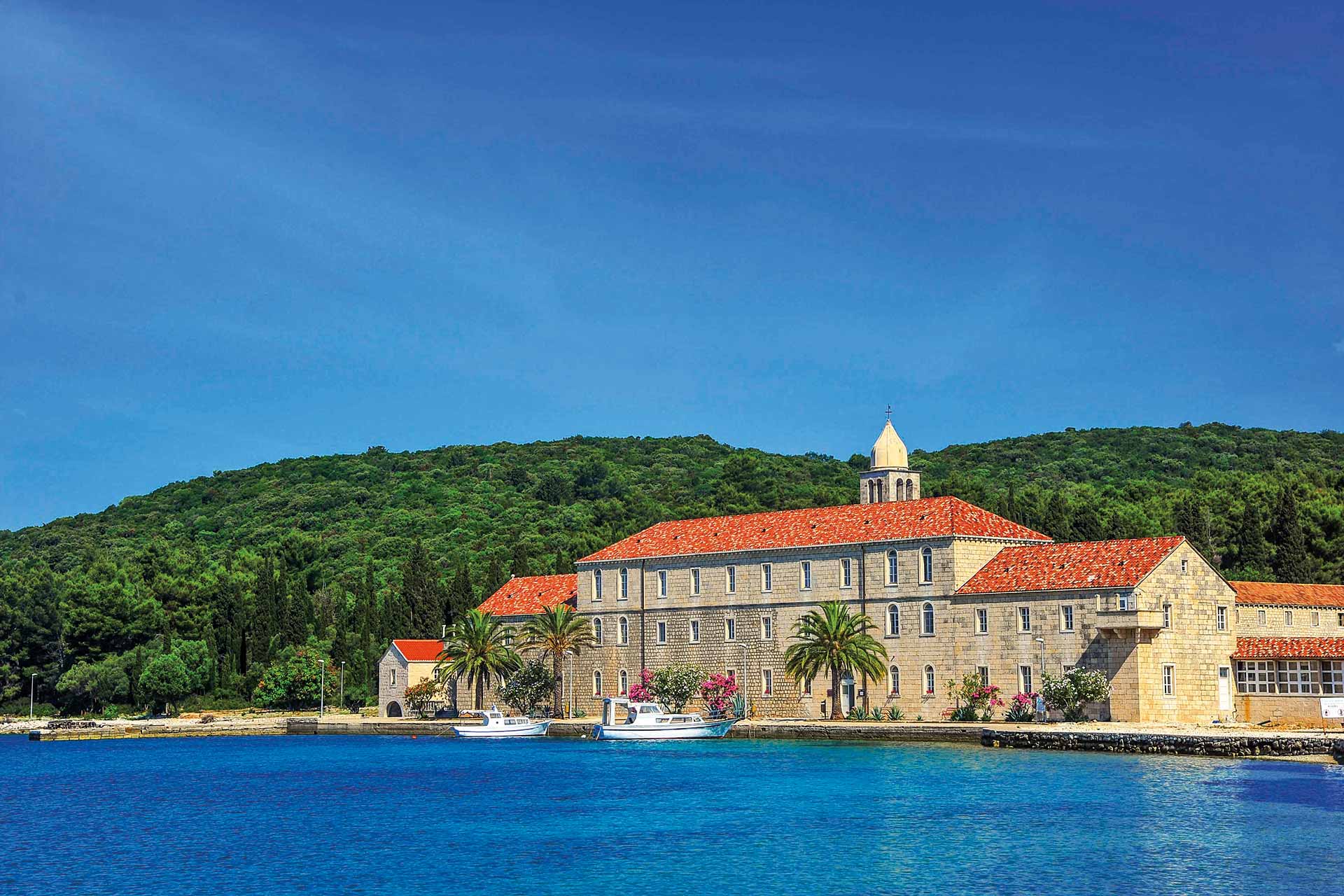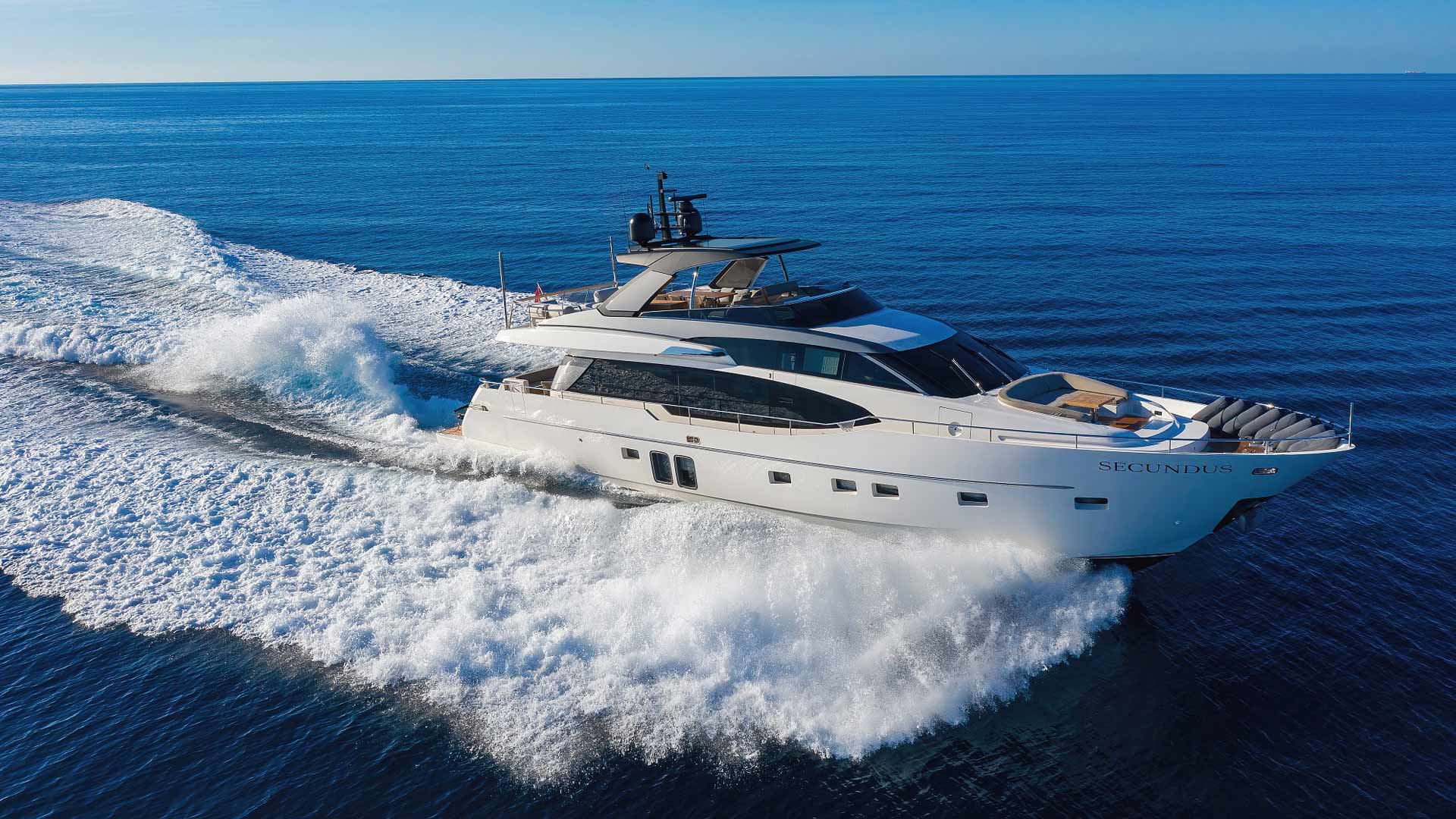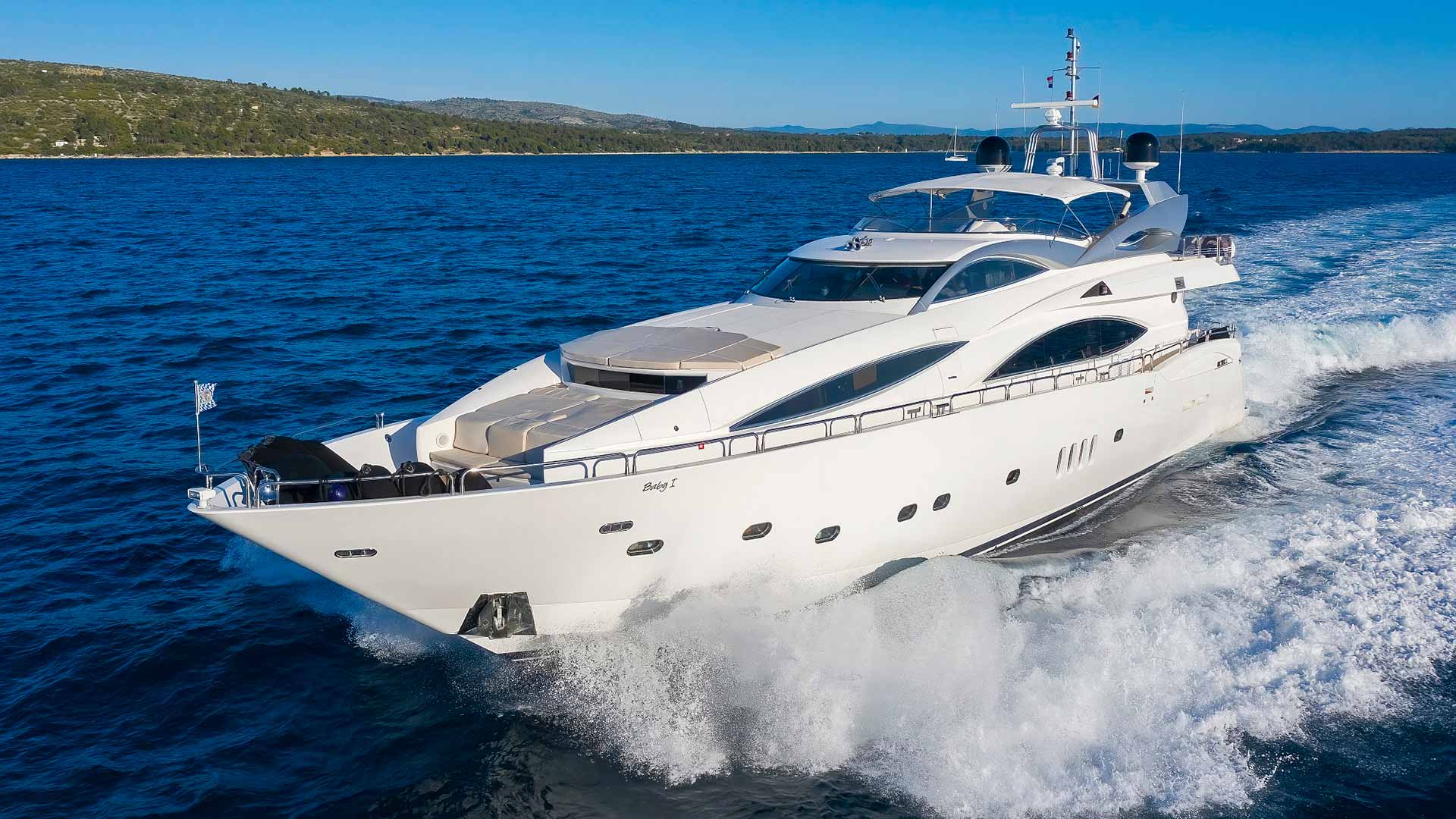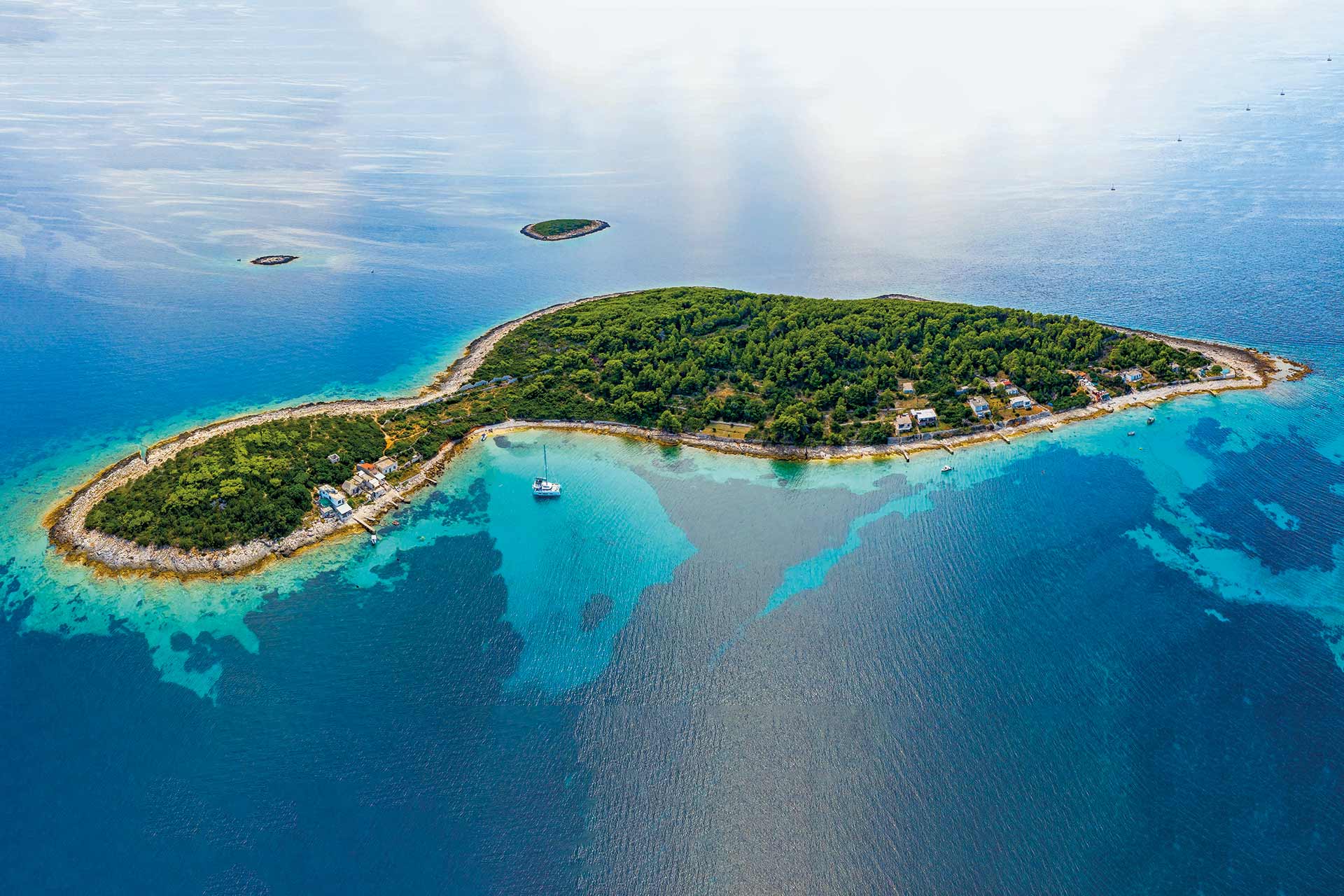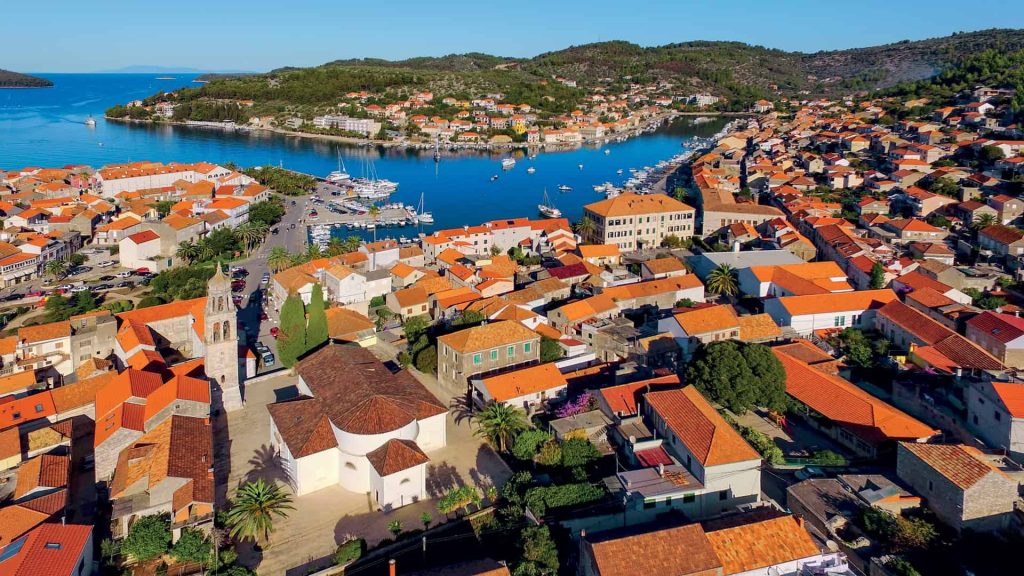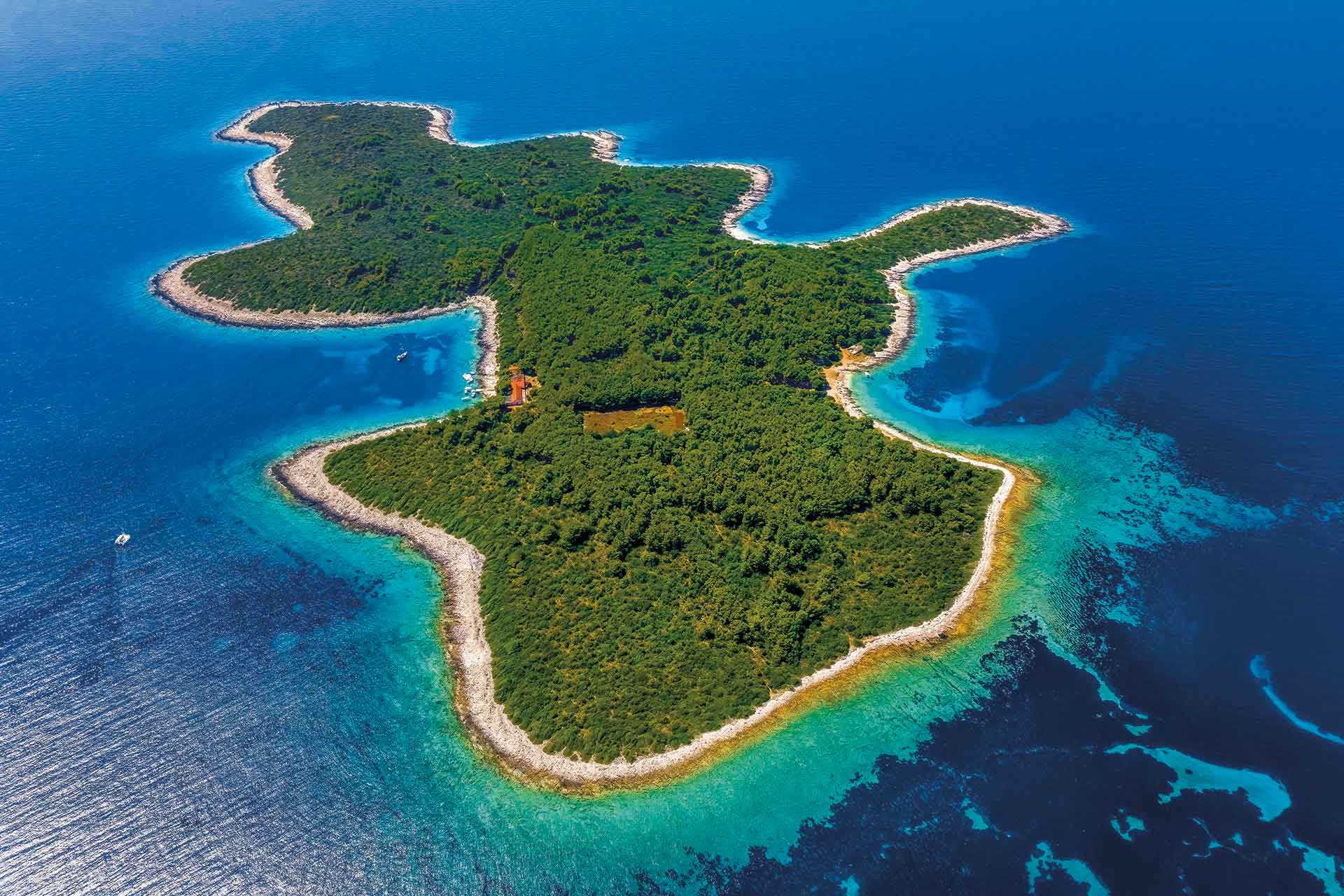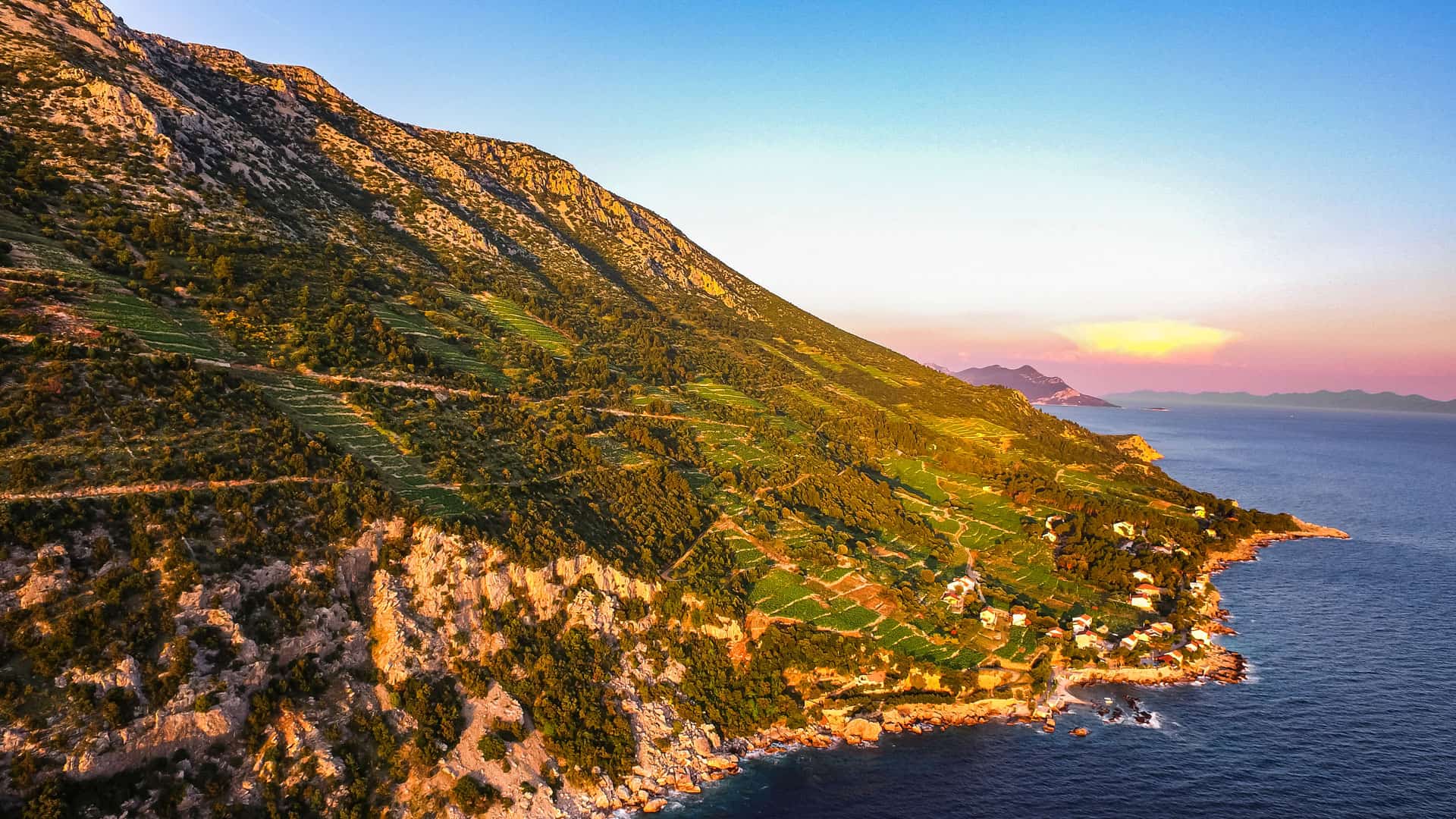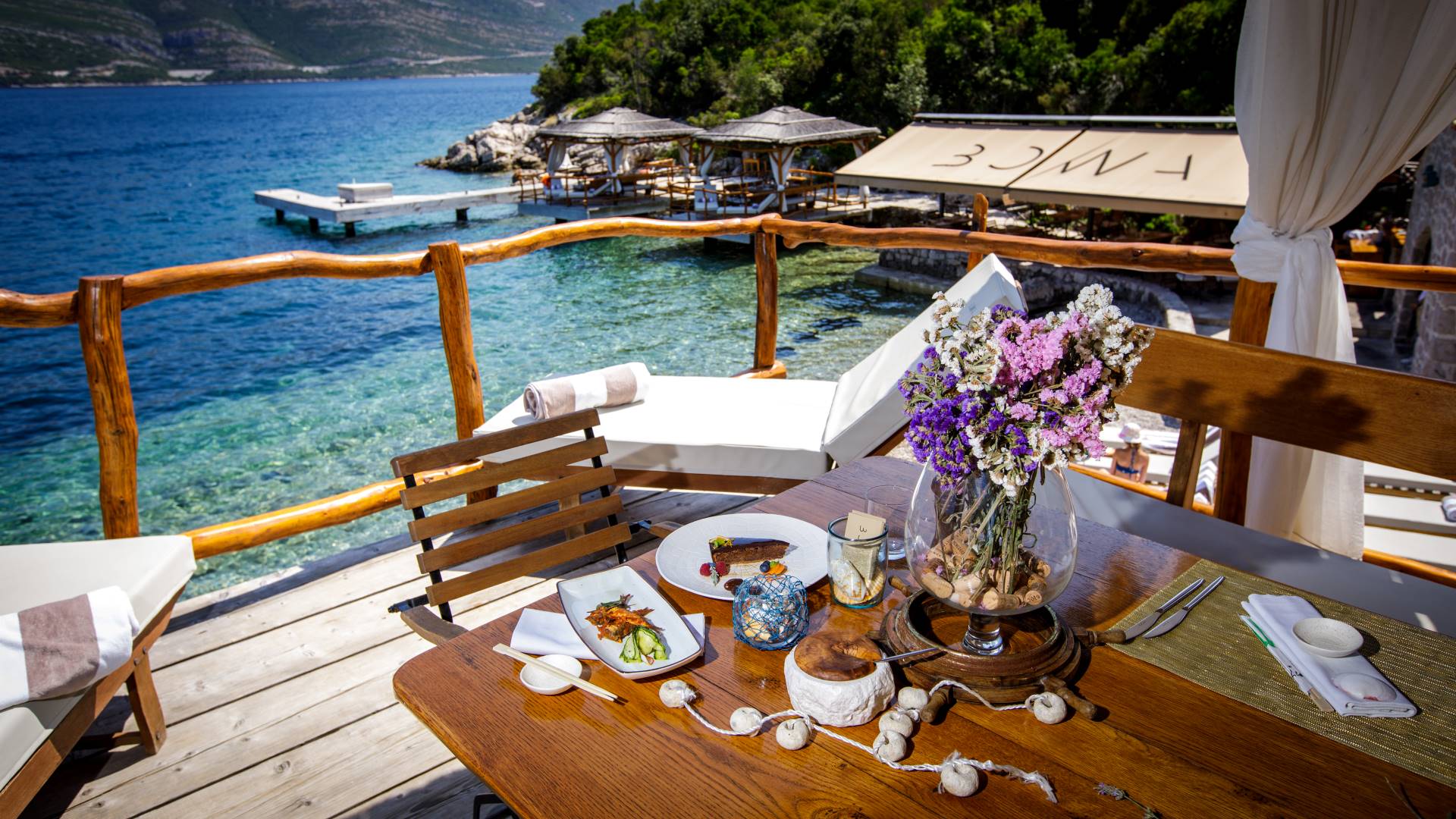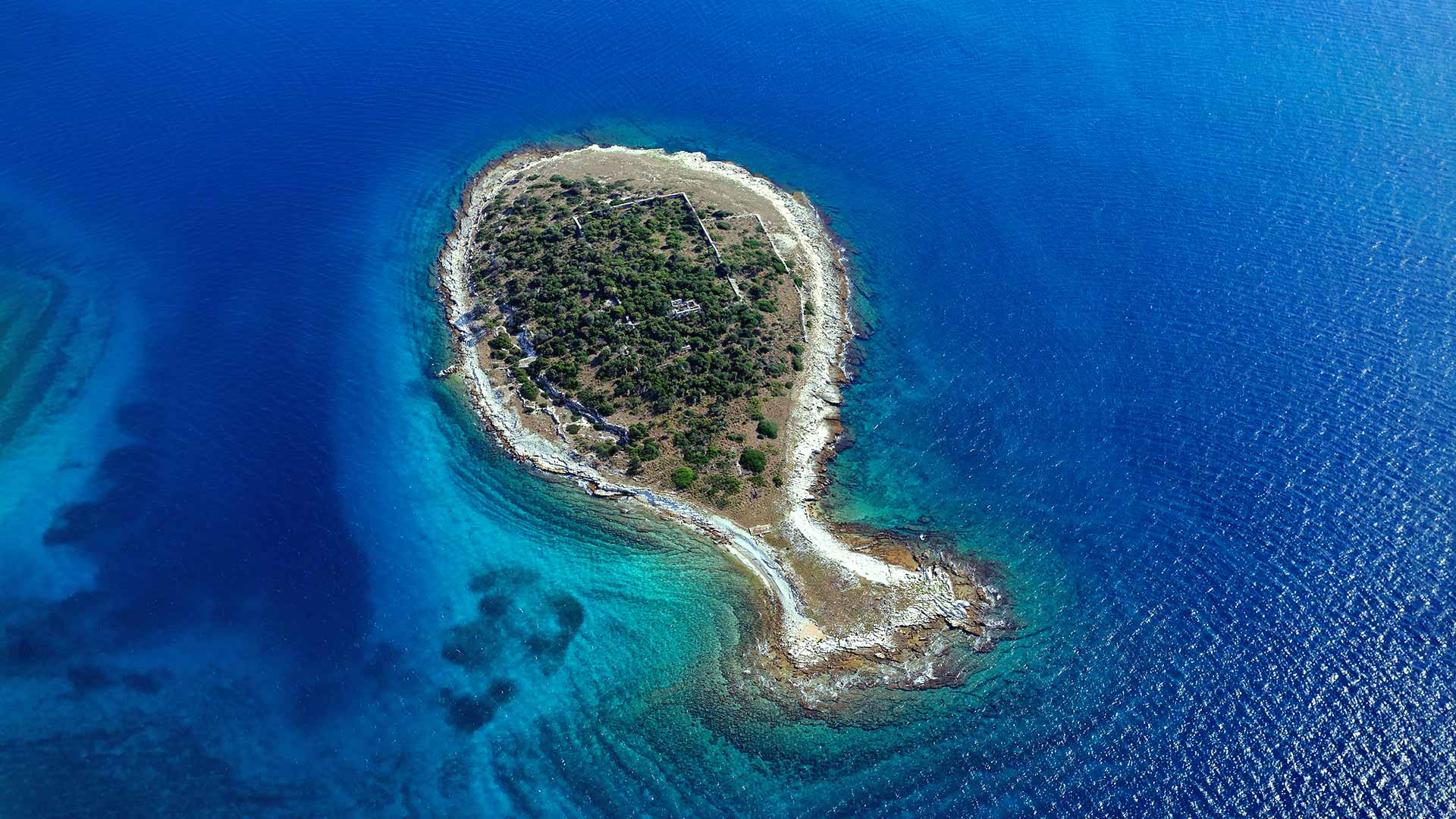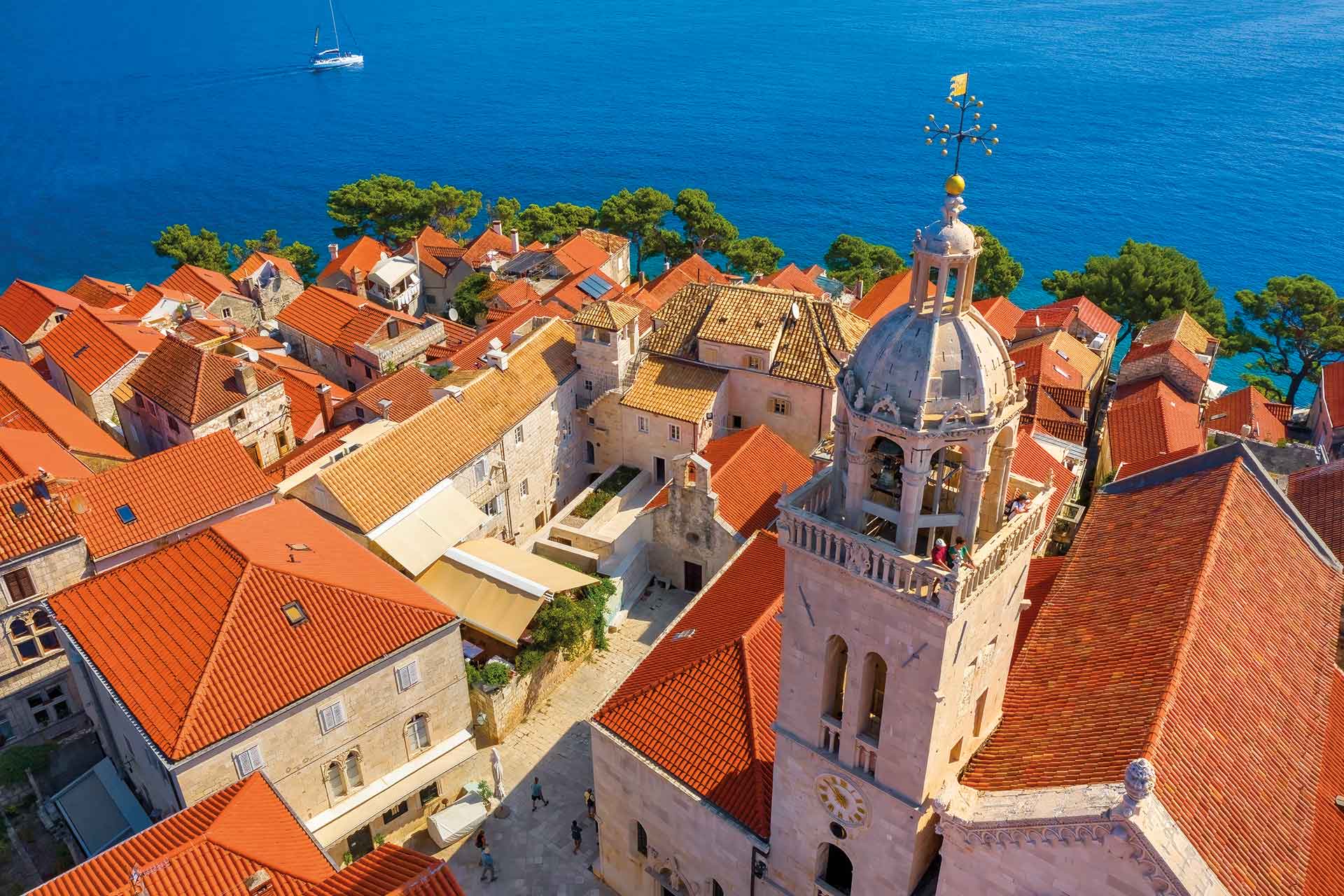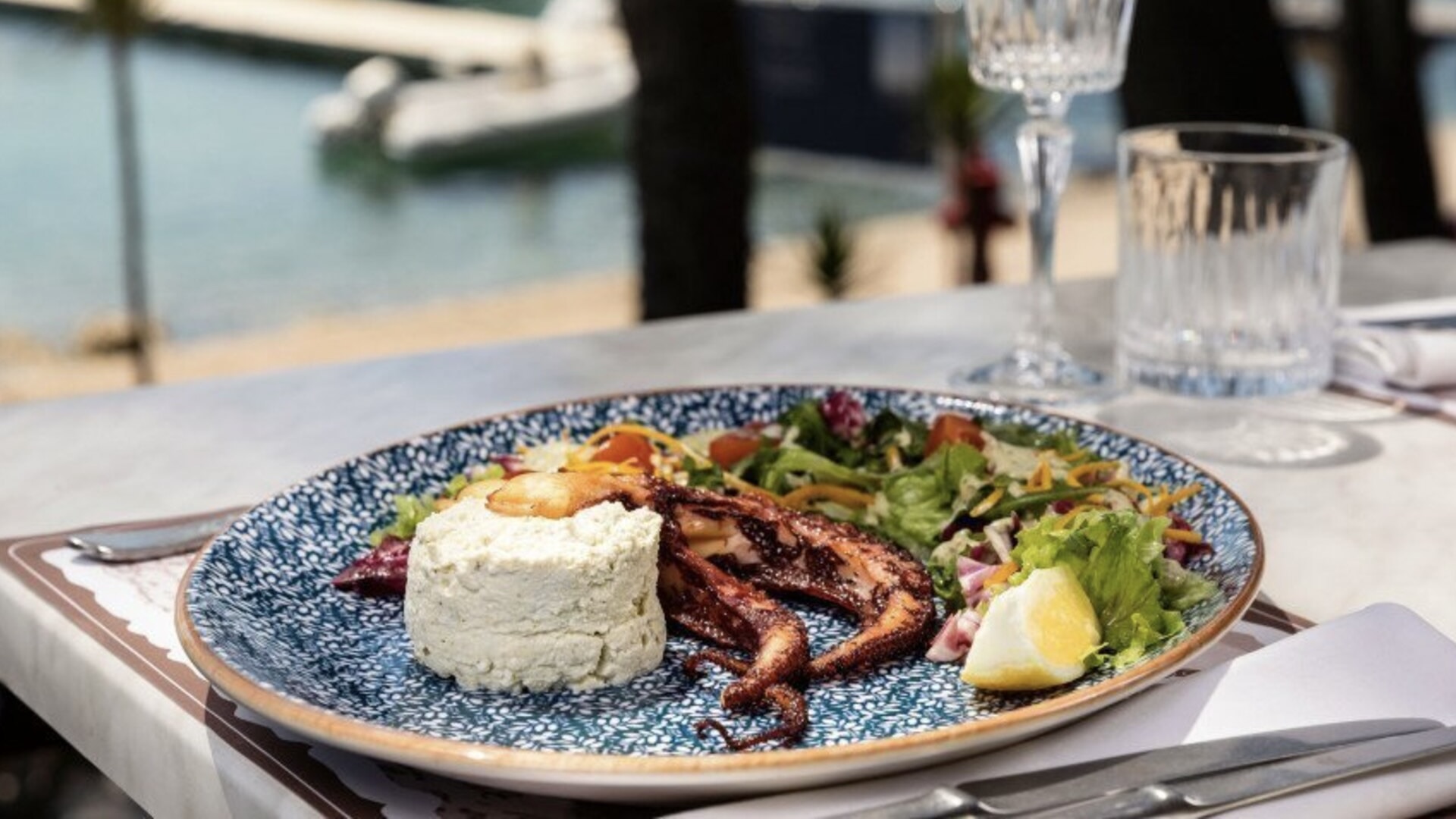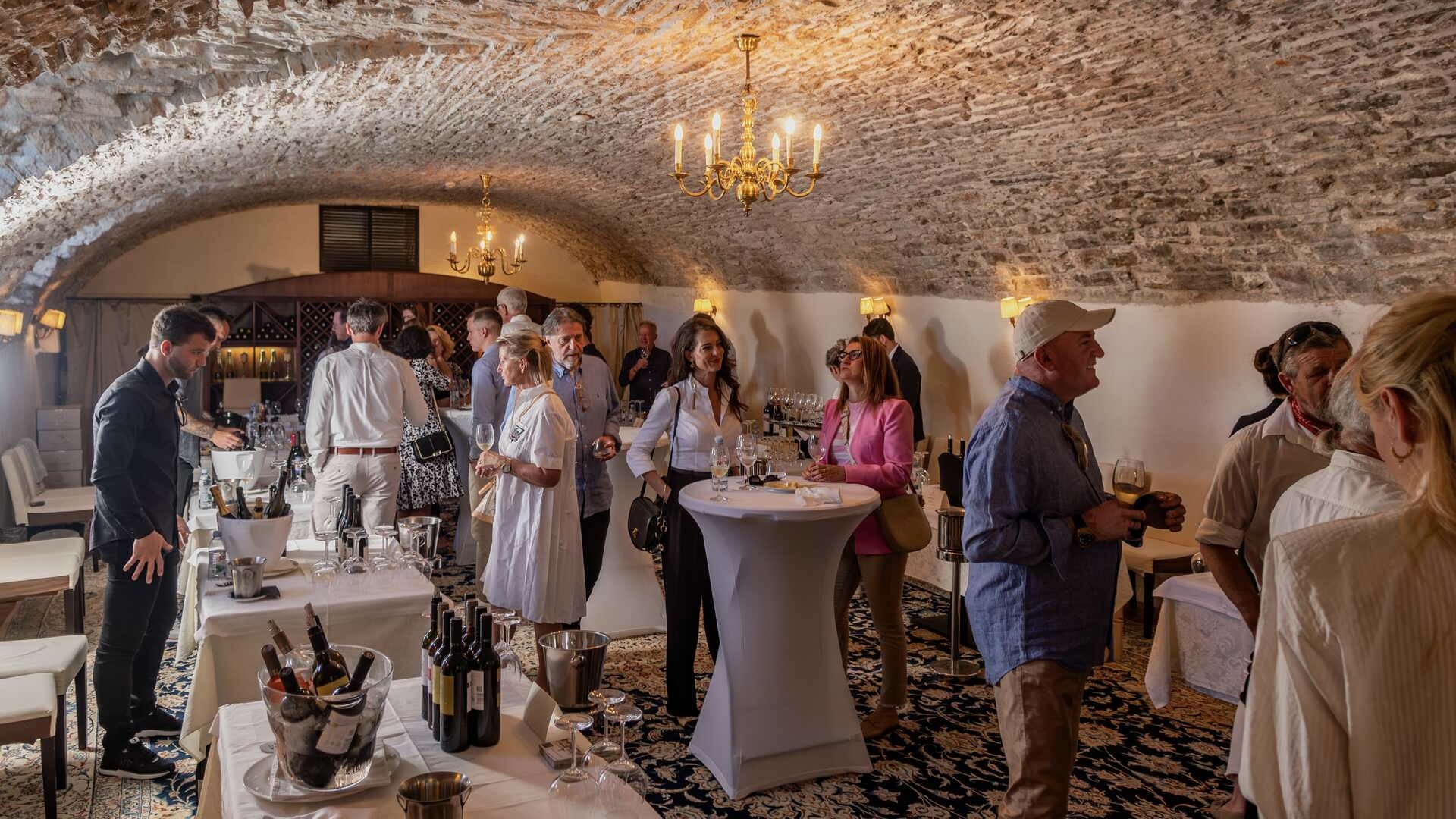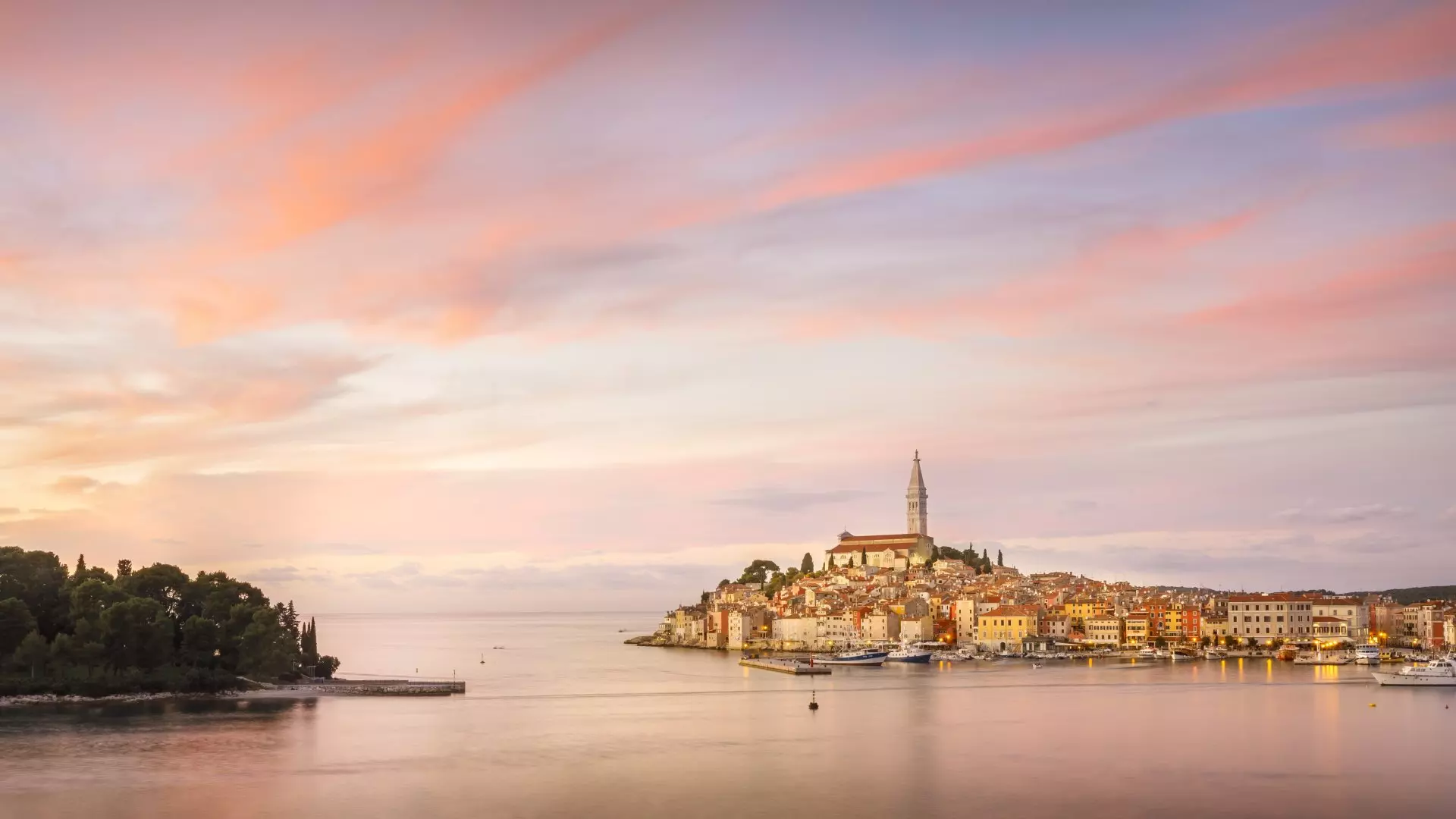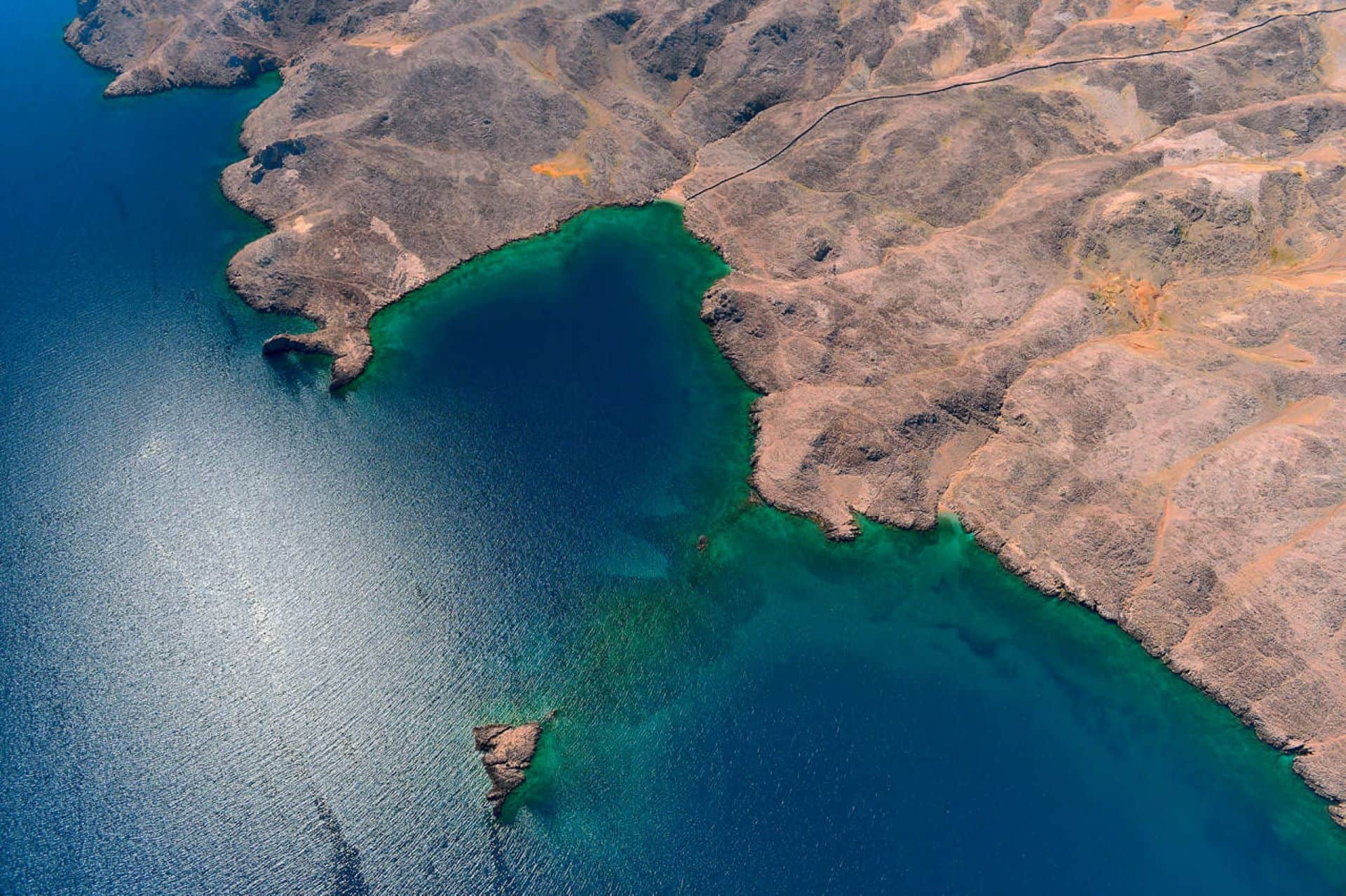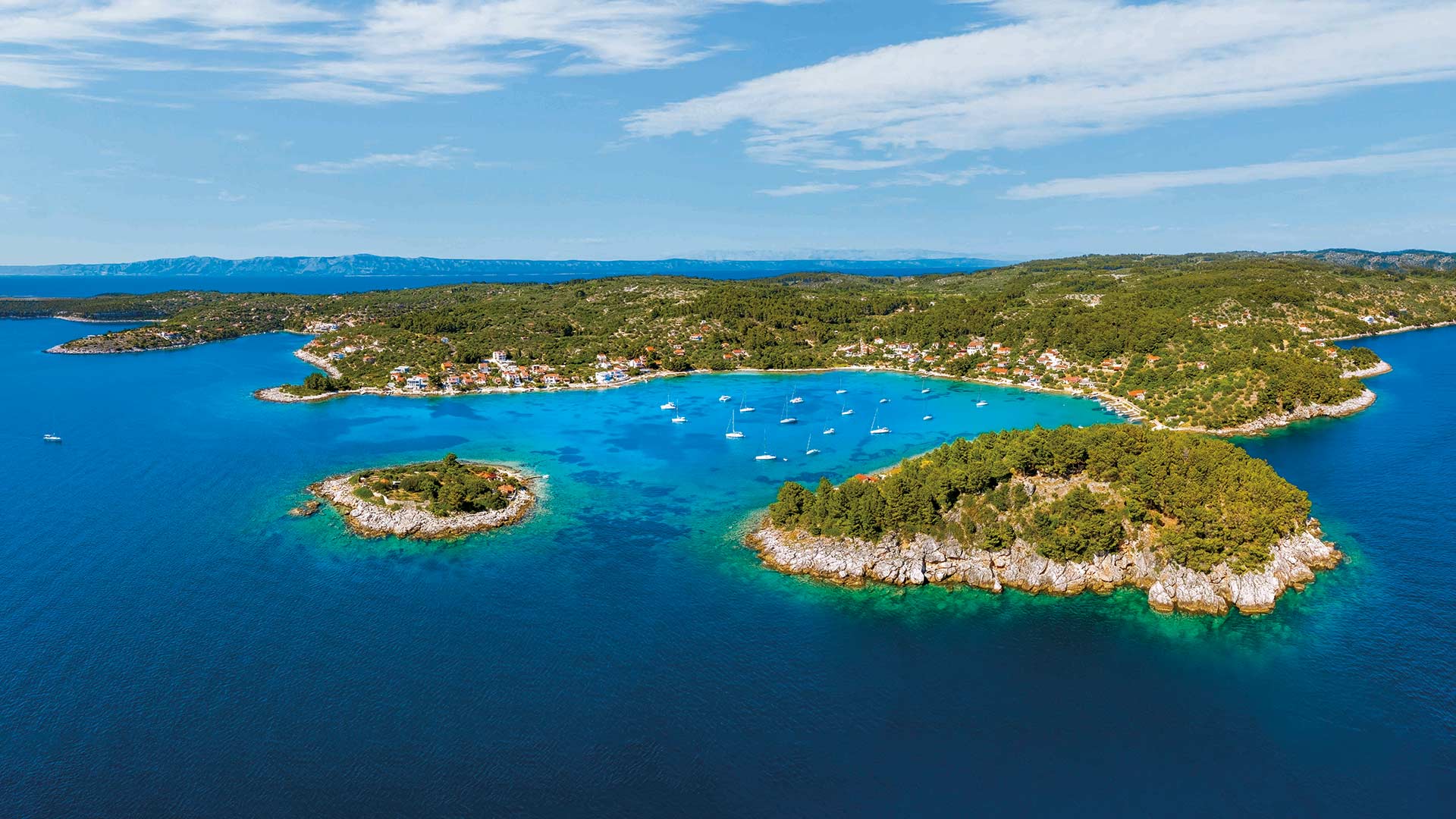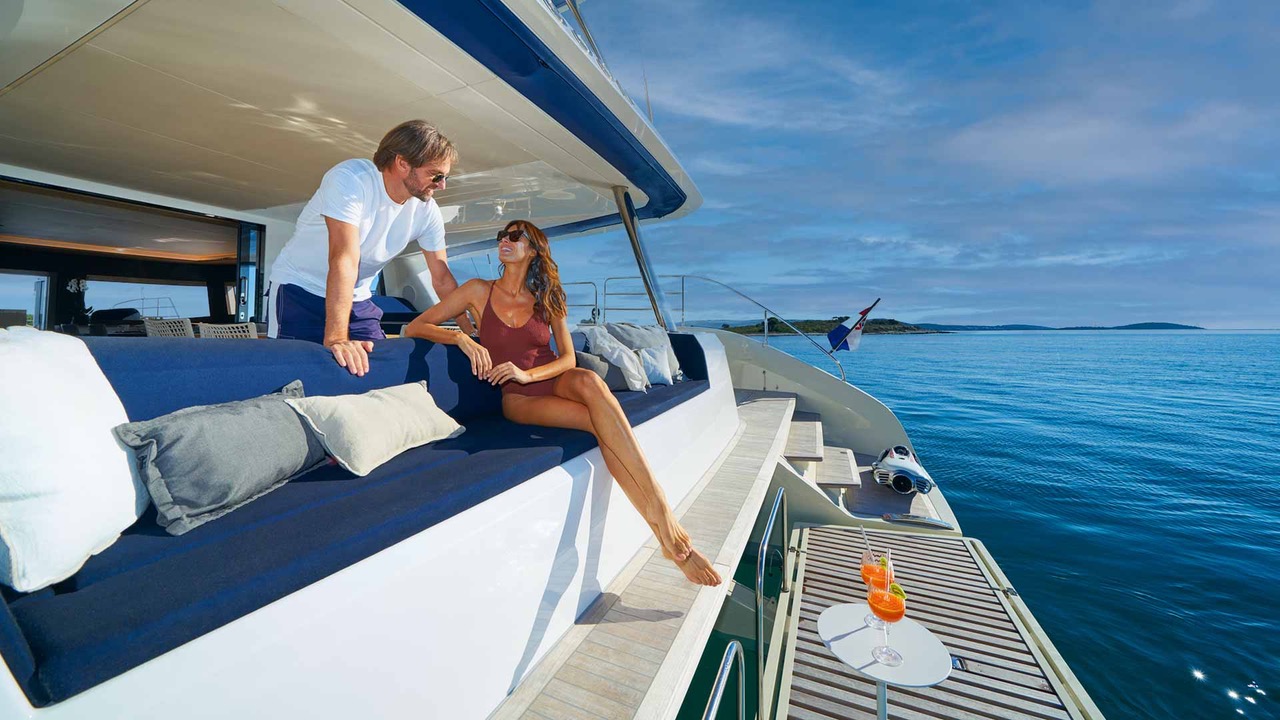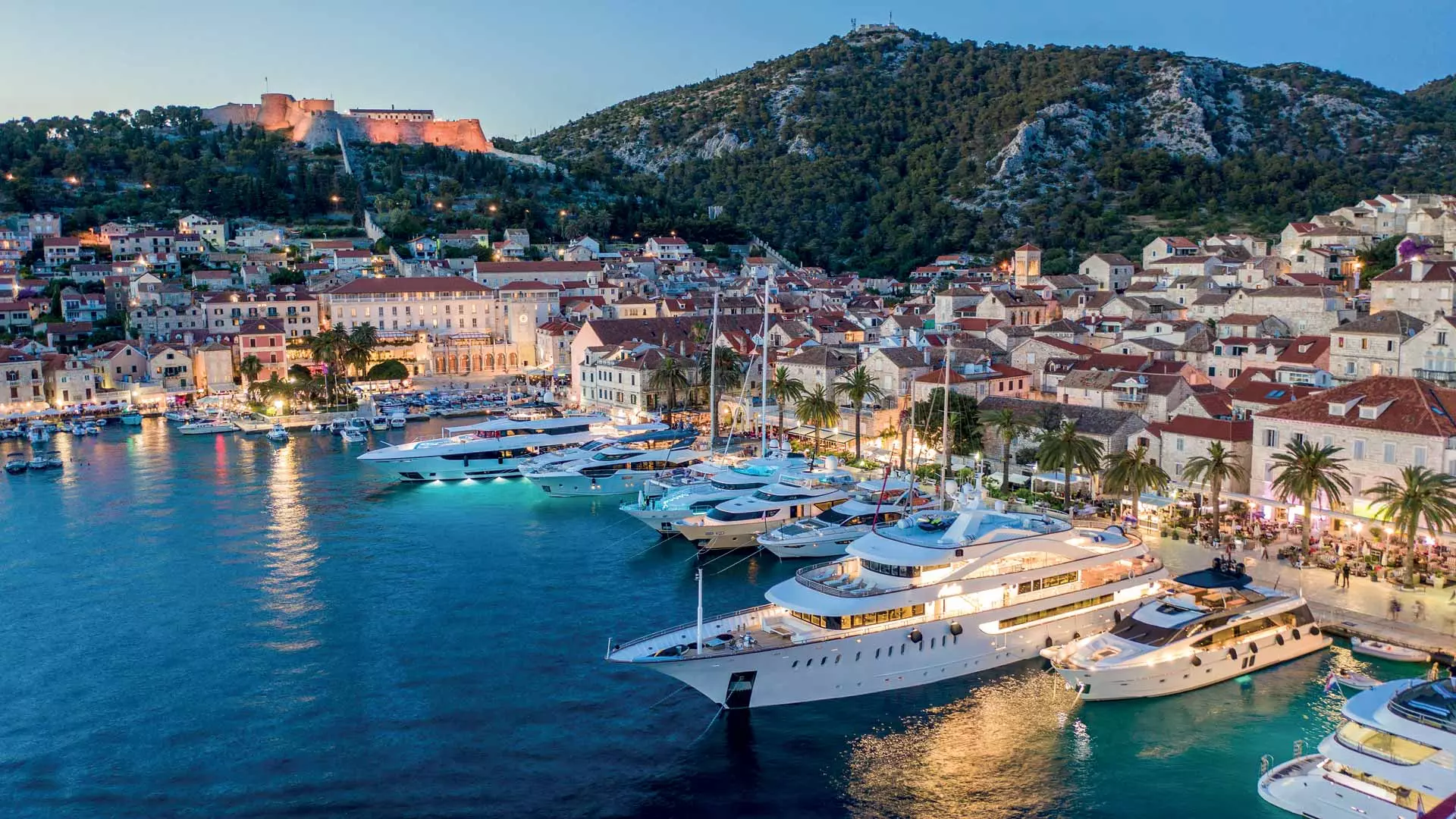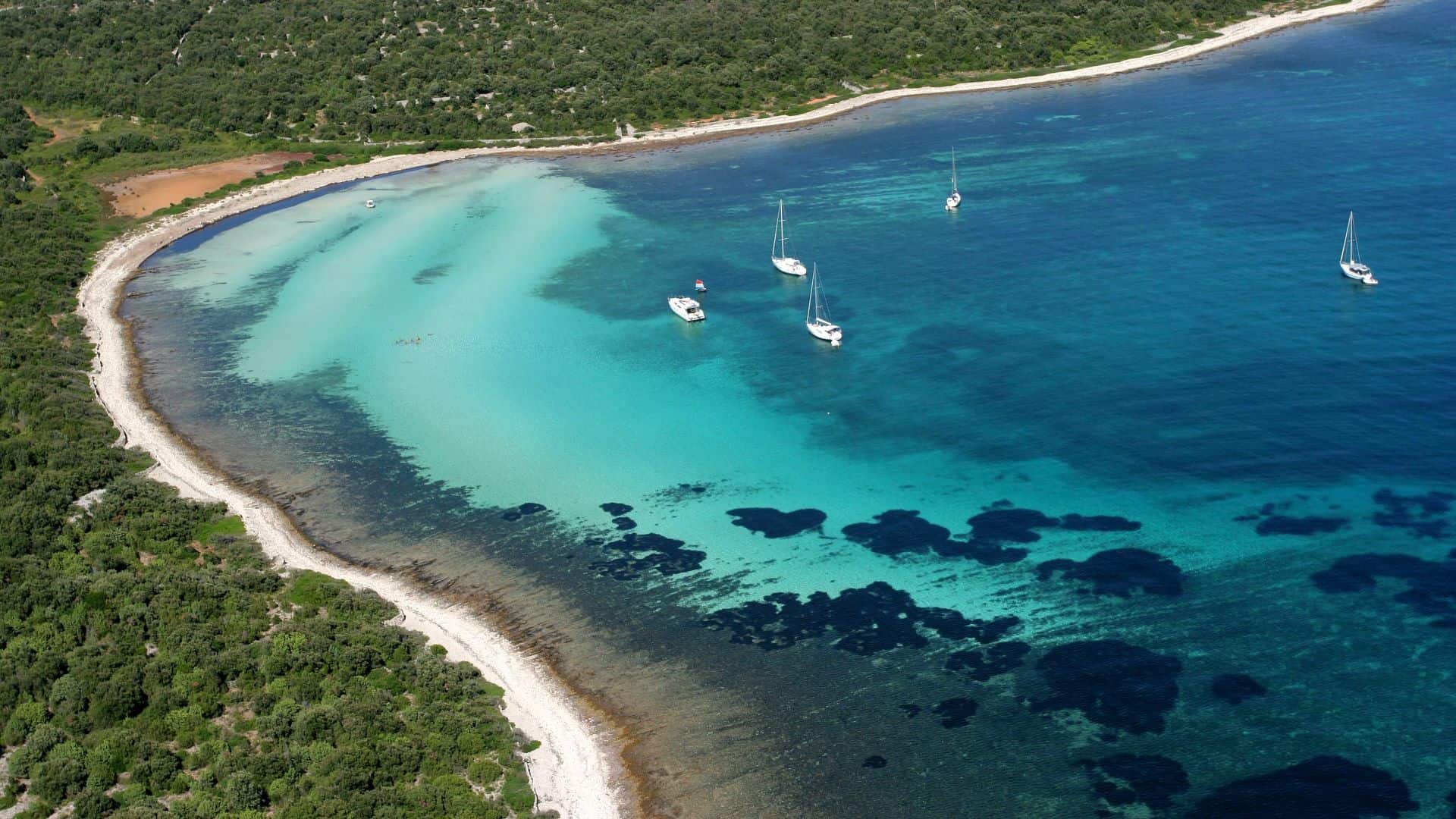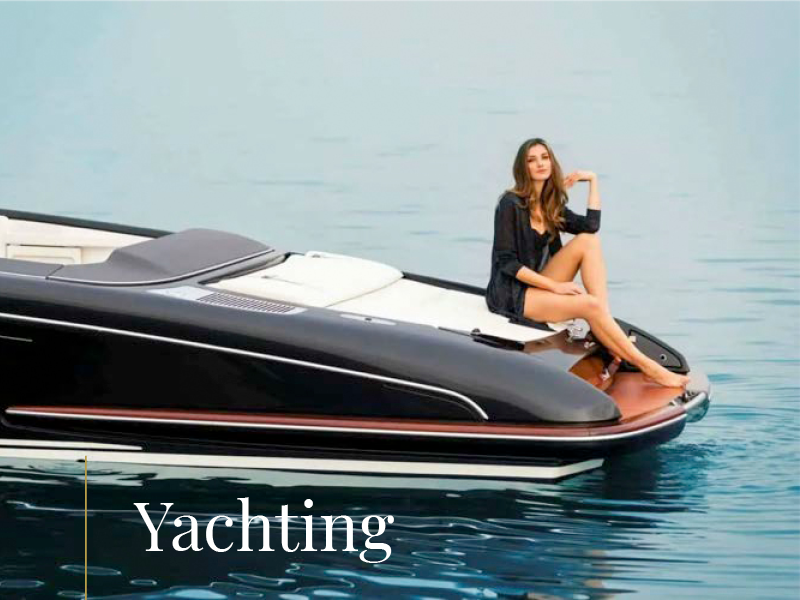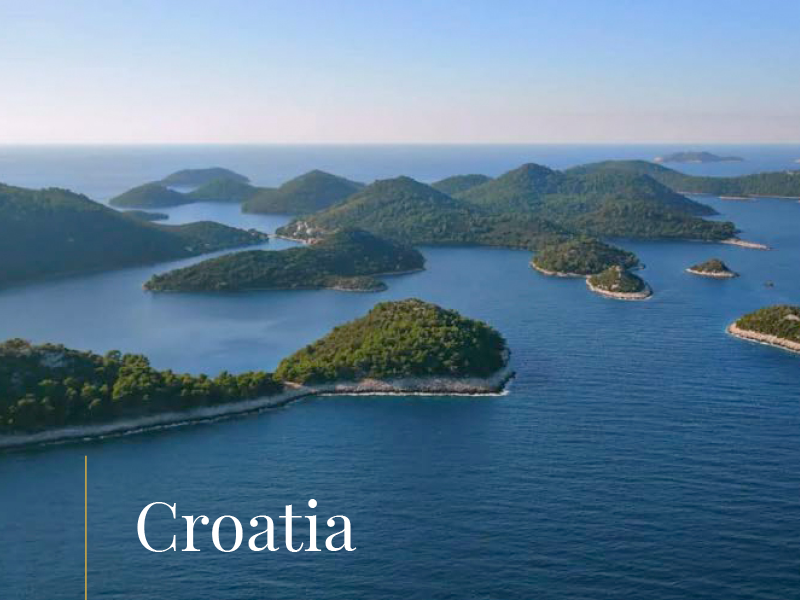Korčula is an island heaven half way between Split and Dubrovnik, so whichever of these two old beauties you’re visiting, make sure you take a little detour and make a pit stop at this charming island
Korčula has a lot to offer – yachting, archaeology, gastronomy and adventure. Stretching across 30 nm from east to west, the island is guarded by two lovely towns; Korčula and Vela Luka. The northern shore is popular among island hoppers and visitors from the nearby Hvar, while the southern shore is a favorite among yachts looking for quieter, calmer waters.
The town of Korčula sits on the coast like a jewel in the crown, surrounded by smaller jewels, from the tiny fishing village of Lumbarda, to one of the 20 nearby minuscule islands in Korčula archipelago. There are several dangerous spots in the shallow water surrounding the islands, so the navigation speed is limited to 4 knots.
Once you drop your anchor, take a relaxing walk through the old streets of Korčula – but first make sure you enjoy the view of the town from the sea. The city walls and towers are so impressive and attractive it’s easy to forget they were not built as decoration. In the past, when they were built, Korčula was an important spot in the middle of all maritime routes and at the entrance to the equally important Pelješac Channel, and these waters have seen many naval battles and skirmishes.
Explore and discover Korčula Island: Jump to specific sections and discover the beauty of Korčula Island.
Marinas on Korčula Surrounded by the blue and charmed by the nature
There are three marinas on the island of Korčula – Marina Lumbarda, Marina Korkyra and ACI Marina Korčula, the most popular among them, nestled in the heart of the old town. Well protected from all winds but the northerly (when tying boats to the outer breakwater is prohibited), the marina is a favorite among luxury yachts. Alternatively, you can tie your boat to the western promenade, but keep in mind it’s not protected from westerly winds. Significantly calmer and more intimate is marina Lumbarda, still open to northerly wind, but much safer.
If you feel like dropping your anchor far from the hubbub of marinas, the options are many and all equally interesting. There is the Badija island with its Franciscan monastery, the long promenade and gentle deer friendly to visitors, or the Stupe island, with an exclusive beach bar Stupe, popular among locals and visitors alike.
Other lovely anchoring spots in the vicinity of the town of Korčula are Vrnik island south shore, or the east shore of the island of Korčula itself, especially Bili Žal and Pržina coves. In all and any of these, you’ll find yourself surrounded by the blue and charmed by the nature.
Featured Yachts
Korčula island south shore: It’s very popular among vacationing yachts
The southern shore of the island lies outside the most popular yachting routes and charms with Robinsonian vibe. Most of the coves there are only accessible via dusty walking trails, spotted with private homes hidden in old pine woods and surrounded by cliffs and smooth pebble beaches.
They are all similar and all charming – Rasohatica, Pavja Luka, Orlanduša – so you’ll just have to pick one you like the most. Our favorite is Pupnatska Luka, where the sandy sea bottom sprouting sea grass is good for anchoring overnight – just keep in mind this spot is plagued by gusts of local wind storming down from the nearby hills. Pupnatska Luka is connected to the rest of the island by an asphalt road, and it’s usually crowded with day trippers, so if you want to enjoy your daily swim in peace and quiet, sail a bit farther west.
Between Brno and Tri luke, there are many lovely tiny islands, but the shore of Korčula has little to offer, mostly due to unsightly newly built private vacation homes. The most popular spot is Tri luke, a cove with three long arms, and the loveliest among them is the shortest, western one. This cove is still mostly undeveloped, with only traditional homes and several taverns.
Tri luke and its tiny sandy beach are well protected from all wind except southerly. The nearby tiny islands of Veli and Mali Pržnjak offer protection from all wind and guarantee a good night’s sleep. The blue lagoon between the two islands boasts several sandy beaches with only a handful of summer homes, so it’s very popular among vacationing yachts.
Korčula island west shore: Ideal for a relaxing day in the sun
The most popular spot on the western shore of the island is the large Vela Luka Bay with the town of Vela Luka nestled in its middle. The town cannot boast the cleanest, most appealing water, but its streets are lovely, especially those far from the shore. East of the fuel station, there is a stretch of promenade with 25 mooring spots, and ahead, 15 buoys, just keep in mind this part of the bay is open to strong, even stormy westerly and southerly, as well as gusts of easterly. The modern and safe new Marina Korkyra is a much better and safer option.
The most attractive part of the Vela Luka Bay is the blue Gradina cove, a favorite among local and visiting yachts. Well protected from northerly, easterly and southerly wind, it is still open to westerly and south-westerly, especially during bouts of bad weather. Sea depth of about 6-7 meters (18-23 ft), and there are around 20 buoys to choose from. In the heart of the cove, there is a lovely traditional restaurant whose owner is an experienced former skipper, so if you need any sort of boating advice, you’ve come to the right place.
Just 2.5 miles away lies the pearl of the entire area – the minuscule island of Proizd, so beautiful the locals consider themselves lucky it’s open to all sorts of wind and unpopular among yachts. Its northern shore shines with smooth white pebbles and white stone beaches flattened to perfection by waves, ideal for a relaxing day in the sun, while its picturesque southern shore boasts the most popular anchoring spot around; Batala cove.
Very popular among tourists, who arrive daily from the nearby Vela Luka, Batala and its popular restaurant ‘Proizd’ buzz with activity seemingly contrasting their size. Interestingly, visitors are not allowed to stay overnight, so the island winds down at sunset, leaving yachting visitors all alone amid all that untouched nature.
Korčula island north shore: Hometown of Marko Polo
Between Proizd and the entrance Pelješac Channel there are only two good sports for passing yachts; Prigradica and Račište. Those tiny villages both have breakwaters, and are rather unnoticed by most yachts. The magical Pelješac Channel is a must-see, with the green hills of the Pelješac Peninsula on one side and the lush Korčula shore on the other. The channel is beloved among surfers, as the Venturi effect keeps the water in perfect surfing conditions almost all year long.
Only five miles before sailing into Korčula town, you’ll find Kneža cove, another azure heaven, well protected from the mischievous mistral wind. Still, keep in mind Kneža is very popular among day boats and tourist water taxi boats, so it’s usually crowded. Finally, after a tour of this charming archipelago, finish it where it probably started, in the hometown of Marko Polo, the charming and dreamy town of Korčula.
Text Josipa Vlahović Cikatić
Photos Boris Kačan, Đorđe Stošić, HTZ / Aleksandar Gospić & Visit Korčula / Zvonimir Ferina
